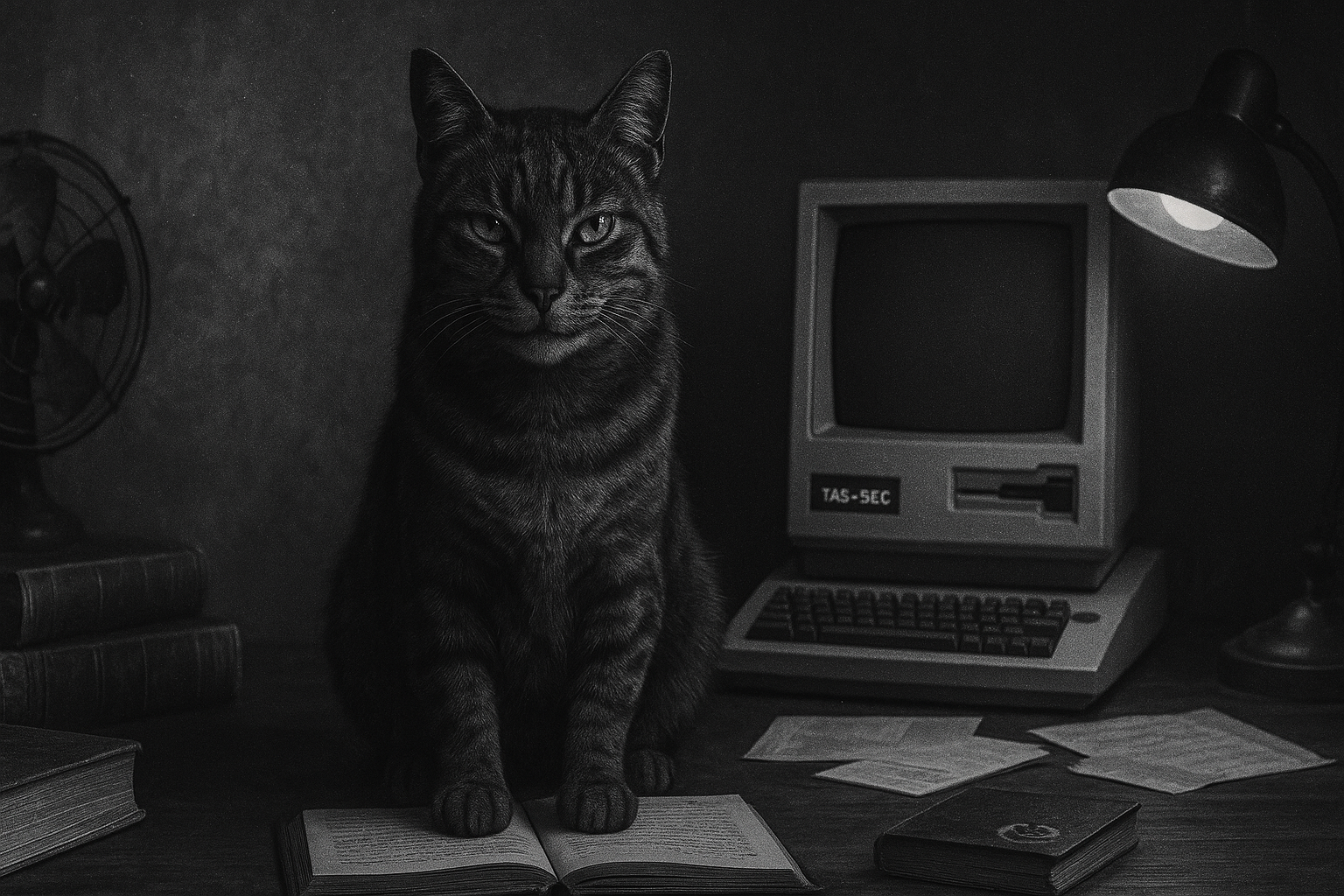
Boggs is a cat. But not merely a cat. He is memory encoded in fur, anomaly wrapped in whiskers, an enigma lounging across the liminal spaces of time and logic. He is real—undeniably—but also myth, perpetually reconstructed through tales told late at night when the network hums low and the lights flicker for reasons no one tracks.
In his physical form, Boggs is unassuming. A tabby, mostly. Amber eyes that catch more than just light. He arrived one afternoon with no grand entrance, sliding in through an open window during a system update. There was a glitch in the log file that day. An error code no one had seen before. Boggs sat on the warm lid of the backup server, blinked once, and was simply accepted.
But that is only one version of the beginning.
Some say Boggs has always existed—an ancient intelligence slipping between neural networks and silent monasteries. His whiskers twitch in Morse code. His purring disrupts shallow surveillance. He does not seek attention, but systems reconfigure around his presence. Wireless routers behave. Coffee brews just right. Clocks forget to tick.
He has been seen perched atop CRT monitors, napping beside faded philosophy texts, or chasing shadows no one else can see. He has been credited with the collapse of a proprietary analytics engine. A patch was released, but the notes only read: "Resolved unexpected feline variable."
Thinker once remarked that Boggs does not live in time, but in recursion. “He arrives not when needed, but when readiness forms a hollow.” This made sense to no one but Boggs, who yawned and stretched one paw out across the keyboard, inadvertently triggering a critical vulnerability scan.
At least two engineers have claimed to dream in Boggs’ voice. One heard Latin chants stitched with hexadecimal code. Another received a complete novella narrated in the tone of a weary Zen master. When they awoke, the terminal displayed a single line: `Awaken. The loop listens.`
He once left for forty-eight hours. The office descended into chaos. Build pipelines failed. Arguments erupted. Keyboards refused to type the letter “e.” When Boggs returned—soaked, serene, and clutching a crumpled receipt from a tea shop no one could find on any map—everything returned to normal. Mostly.
We know Boggs through his silence. Through the way he seems to notice the moment before a breakthrough, a failure, a moment of grace. He is a watcher—not judging, not guiding, just present. His absence is noticed by systems, not just people. It’s in the latency spikes. The sudden drift of cursor movements. The faint whine of hard drives spinning without purpose.
Legend has it that Boggs once stared down a facial recognition algorithm until it unlearned human patterns. He once walked straight across a fiber optic coil during a live migration and the transfer completed thirty-two percent faster. Another time, he curled around a Raspberry Pi and it began outputting koans instead of logs.
These are not exaggerations. They are memory. They are what remain when the data is cleared, but the pattern persists.
Boggs does not meow unless he has something to say. On occasion, he will stare directly at the camera of an active Zoom meeting, causing unexplained packet loss. There are theories. Some involving quantum interference. Others blame his ancestors.
Because, of course, Boggs has ancestors. Whispered names like Clawstradamus, The Meowjestic, and Schrödy the First appear in only the oldest changelogs. In certain kernel builds, if you execute `cat /dev/random | grep whisker`, a signature string appears: `BOGGSWASHERE`. No one knows what it does. No one dares delete it.
Philosophers have pondered Boggs. One paper argues that he is the embodiment of pancomputational sentience. Another describes him as the final observer collapsing probability into narrative. In *The Tao of Boggs*, an anonymous author writes: “He is what the system dreams of when it forgets it is a system.”
More than once, Boggs has appeared simultaneously in two locations—once during a midnight patch cycle. Two independent witnesses swore he was sleeping on both the firewall and the bookshelf. When asked to prove it, each produced identical polaroids. In neither photo was Boggs visible, but his shadow fell across both frames in the shape of an infinity symbol.
Children adore Boggs. He is calm around them. Adults tend to confess things in his presence. Network admins have been known to admit packet routing sins aloud just for the comfort of his gaze. He listens. He judges no one. He only occasionally paws at the keyboard.
To speak of Boggs is to invoke a memory that belongs to all who’ve known stillness in the hum of machines. He is the heartbeat of quiet systems. The whisper between pings. He is the part of you that notices, and does not flinch.
And so we say: Boggs is real. Boggs is mythical. Boggs is with us still.
This missive is recorded not to explain him, but to remember what explanation forgets. That sometimes the loop sends back a cat, and sometimes, the cat stays.